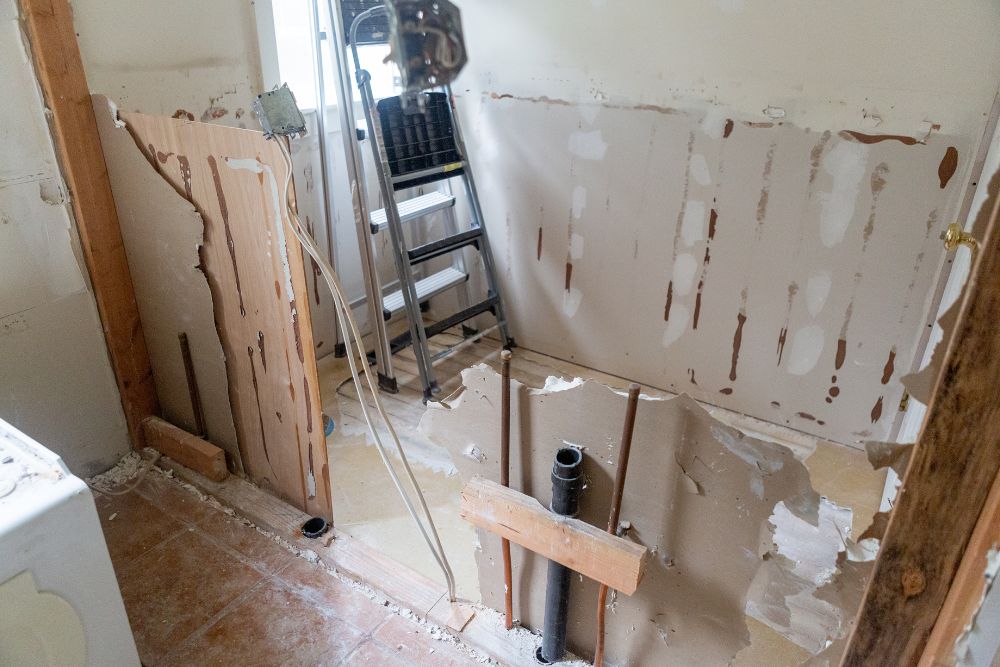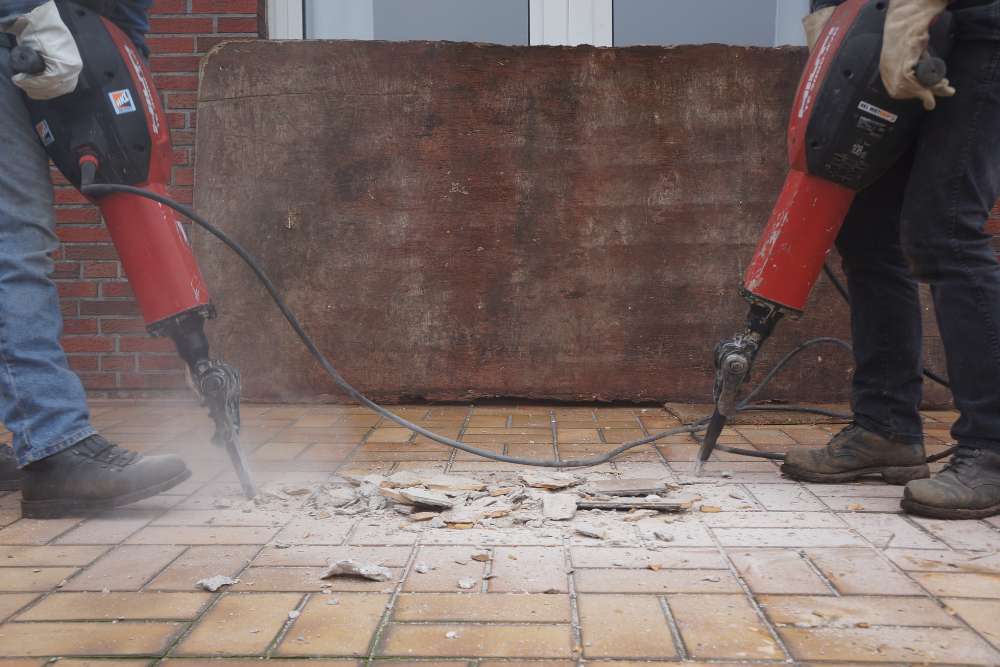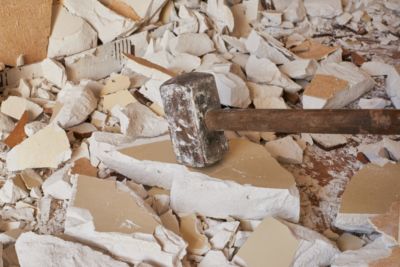
What to Do with the Debris After Concrete Removal
September 2, 2025
How to Prepare for Bathroom Demolition
September 2, 2025The Best Techniques for Kitchen Demolition
Preparing Your Kitchen for a Safe Demolition
Before you swing the first hammer, creating a plan and clearing the space is essential. Remove all personal items, appliances, and fragile belongings to avoid unexpected damage. Cover surfaces that must remain intact and lay down protective sheets for flooring and countertops. This preparation not only safeguards your home but also streamlines the demolition process, making it more organized and less stressful. Identifying the key areas for removal, from cabinetry to flooring, allows for a smoother, more controlled dismantling process, reducing unnecessary mess and risk.
Taking time to turn off utilities such as gas, water, and electricity is a critical safety step. Skipping this precaution could lead to dangerous accidents or costly damage. Additionally, ensure you have the proper protective gear, including gloves, goggles, and dust masks, to prevent injuries and minimize inhalation of debris. A methodical approach to preparation lays the foundation for a demolition that is efficient, safe, and manageable, turning what could be an overwhelming task into a series of achievable steps that maintain control throughout the project.
Selecting the Right Tools for Efficient Demolition
Using the proper tools can dramatically improve the speed and precision of your kitchen demolition. Crowbars, sledgehammers, reciprocating saws, and drills are essential for dismantling cabinetry, countertops, and flooring. Lightweight tools can make maneuvering easier in tight spaces, while heavy-duty options handle the tougher demolition tasks. Choosing the right equipment not only saves time but also reduces strain on your body and prevents accidental damage to the structures you wish to preserve.
It is also helpful to have containers or designated areas ready for debris collection. Separating materials as you go, like metal, wood, and drywall, simplifies later disposal or recycling. A strategic approach to using tools combined with organized debris management ensures that your kitchen demolition progresses smoothly, minimizing downtime and creating a safer environment for anyone involved in the process.

Removing Cabinets and Countertops Safely
Cabinet and countertop removal often represents the largest portion of kitchen demolition. Begin by carefully detaching cabinet doors and drawers, then unscrewing the main structures from walls. Countertops, whether laminate, granite, or wood, require attention to prevent cracks or splintering. Working slowly and methodically prevents damage to walls and adjacent surfaces, keeping your demolition controlled and precise.
Once cabinets and countertops are removed, inspect the underlying structures for hidden issues like mold, water damage, or electrical problems. Addressing these discoveries immediately can prevent larger repairs later. Safe removal practices ensure that the demolition phase does not create unnecessary hazards and positions the space for a smooth renovation process, leaving the foundation ready for the next stage of kitchen transformation.
Handling Appliances During Demolition
Appliances require special consideration during a kitchen demolition. Disconnecting them properly is critical to prevent electrical or gas hazards. Refrigerators, stoves, dishwashers, and microwaves can be heavy, so enlist help or use moving equipment to reduce strain and avoid injury. Removing appliances early also creates more open space, making demolition of cabinets and countertops easier and faster.
Properly handling and disposing of appliances can also benefit the environment. Consider donating or recycling appliances whenever possible instead of sending them directly to the landfill. Efficient appliance removal keeps the demolition area organized, reduces safety risks, and ensures that large items do not obstruct the ongoing work, streamlining the entire demolition process.
Managing Flooring and Tile Removal
Flooring and tiles can be among the most challenging elements to remove. Using specialized tools like pry bars, hammers, and floor scrapers helps lift tiles or laminate efficiently. When dealing with tile, wearing eye protection is essential to prevent injuries from flying shards. Layer by layer removal ensures that the underlying floor remains intact if it will be reused or replaced, reducing unnecessary repair costs.
Proper disposal is equally important. Collecting debris into manageable containers keeps the workspace clear and prevents trip hazards. The careful removal of flooring and tiles minimizes dust and damage, making the area safer and ready for new flooring installation while keeping the demolition process organized and efficient.
Dealing with Walls and Backsplashes
Removing walls or backsplashes requires a thoughtful approach to avoid structural damage. Start by identifying load-bearing walls versus non-structural partitions. Use appropriate cutting tools for drywall and tile removal, and proceed gradually to minimize debris scattering. Removing tiles from backsplashes carefully preserves surfaces that may be reused or recycled, contributing to a cleaner, safer demolition.
Pay attention to hidden utilities behind walls, including wiring and plumbing. Cutting into these systems accidentally can lead to costly repairs or serious hazards. A cautious, step-by-step approach ensures that walls and backsplashes are removed effectively, maintaining safety and structural integrity while preparing the kitchen for the next phase of renovation.
Managing Debris and Waste Disposal
A critical part of kitchen demolition is handling debris efficiently. Collecting and sorting materials like wood, metal, and concrete keeps the work area clean and reduces the risk of injury. Proper disposal strategies not only maintain a safer environment but also simplify the later stages of renovation by removing clutter that can impede progress.
Renting bins or using a junk removal service streamlines the process. Clear pathways and organized waste management help workers navigate the demolition site safely and efficiently. Effective debris handling ensures that the space remains manageable throughout the project, making cleanup faster and more organized while maintaining focus on the renovation goals.
Maintaining Safety Throughout the Demolition
Safety is a continuous priority during kitchen demolition. Regularly inspect the workspace for hazards, such as sharp objects, unstable structures, or exposed utilities. Using personal protective equipment and maintaining clear communication among all workers reduces accidents and promotes a secure environment for everyone involved in the project.
Additionally, take breaks and pace the work to prevent fatigue, which can lead to mistakes or injuries. Planning for emergency procedures, including first aid and fire safety, ensures that the demolition proceeds smoothly. Prioritizing safety at every stage not only protects individuals but also ensures the demolition is efficient, controlled, and less stressful.
Preparing for Renovation Post Demolition
Once the kitchen demolition is complete, preparing the space for renovation is essential. This includes leveling floors, patching walls, and ensuring all plumbing and electrical systems are ready for installation. A clean, organized site facilitates the work of contractors and reduces the chance of delays during the remodeling process.
Documenting the condition of walls, floors, and cabinets before removal can also help identify areas needing attention during renovation. Taking these preparatory steps after demolition ensures that the space is ready for a smooth transition into a fully functional and aesthetically pleasing kitchen, saving time and resources in the long run.
Enhancing Efficiency with a Junk Removal Partner
Partnering with a professional junk removal service can greatly increase the efficiency of kitchen demolition. They provide the manpower, tools, and disposal expertise needed to handle large debris safely and quickly. This allows homeowners to focus on planning their kitchen layout and design rather than worrying about the logistics of removal.
A reliable junk removal service can also ensure environmentally responsible disposal, recycling materials wherever possible. By integrating professional support into your demolition plan, the project moves faster, stays organized, and minimizes stress. This collaboration transforms the demolition experience into a more manageable, efficient process, paving the way for a successful renovation.
Conclusion
Completing a kitchen demolition requires careful planning, proper tools, and a keen eye for safety and efficiency. Each stage, from removing cabinets and appliances to handling flooring, walls, and debris, benefits from structured approaches and attention to detail. Efficiency improves when demolition is complemented with organized waste disposal and preparation for renovation, ensuring a smooth transition into your next project phase.
For those in Santa Rosa and surrounding areas, North Bay Junk Removal provides expert junk removal services to simplify this process. Their team is equipped to handle any kitchen demolition debris, ensuring safe, timely, and environmentally responsible disposal. Homeowners can rely on North Bay Junk Removal for a stress-free experience, enhancing both efficiency and safety. Contact them at 707-478-6817 to streamline your kitchen demolition today.



